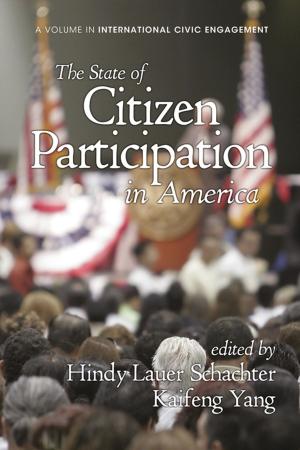Law & Education Inequality
Removing Barriers to Educational Opportunities
Nonfiction, Reference & Language, Education & Teaching, Educational Theory, Educational Reform, Special Education| Author: | ISBN: | 9781681231754 | |
| Publisher: | Information Age Publishing | Publication: | July 1, 2015 |
| Imprint: | Information Age Publishing | Language: | English |
| Author: | |
| ISBN: | 9781681231754 |
| Publisher: | Information Age Publishing |
| Publication: | July 1, 2015 |
| Imprint: | Information Age Publishing |
| Language: | English |
Over the past decade, No Child Left Behind, Common Core, Race to the Top, data mining initiatives, Title IX gender equity, Individuals with Disabilities Education Act, Americans with Disabilities Act, and executive actions on immigration illustrate key federal initiatives that have redefined standards, priorities, and practices within educational institutions. Similarly, state policies in terms of school funding, school choice, teacher qualifications, student bullying, and other measures have added another layer of complexity to the education law and policy dialogue particularly when addressing matters of education inequality. These emergent policies beget the question: how have these policies contributed to easing the effects of educational inequality? The purpose of this book is to examine the role of law as potentially countering or impeding desirable education reforms, and it calls on readers to consider how policymakers, lawyers, social scientists, and educators might best alter the course in an effort to advance a more just and less unequal educational system.
Over the past decade, No Child Left Behind, Common Core, Race to the Top, data mining initiatives, Title IX gender equity, Individuals with Disabilities Education Act, Americans with Disabilities Act, and executive actions on immigration illustrate key federal initiatives that have redefined standards, priorities, and practices within educational institutions. Similarly, state policies in terms of school funding, school choice, teacher qualifications, student bullying, and other measures have added another layer of complexity to the education law and policy dialogue particularly when addressing matters of education inequality. These emergent policies beget the question: how have these policies contributed to easing the effects of educational inequality? The purpose of this book is to examine the role of law as potentially countering or impeding desirable education reforms, and it calls on readers to consider how policymakers, lawyers, social scientists, and educators might best alter the course in an effort to advance a more just and less unequal educational system.















